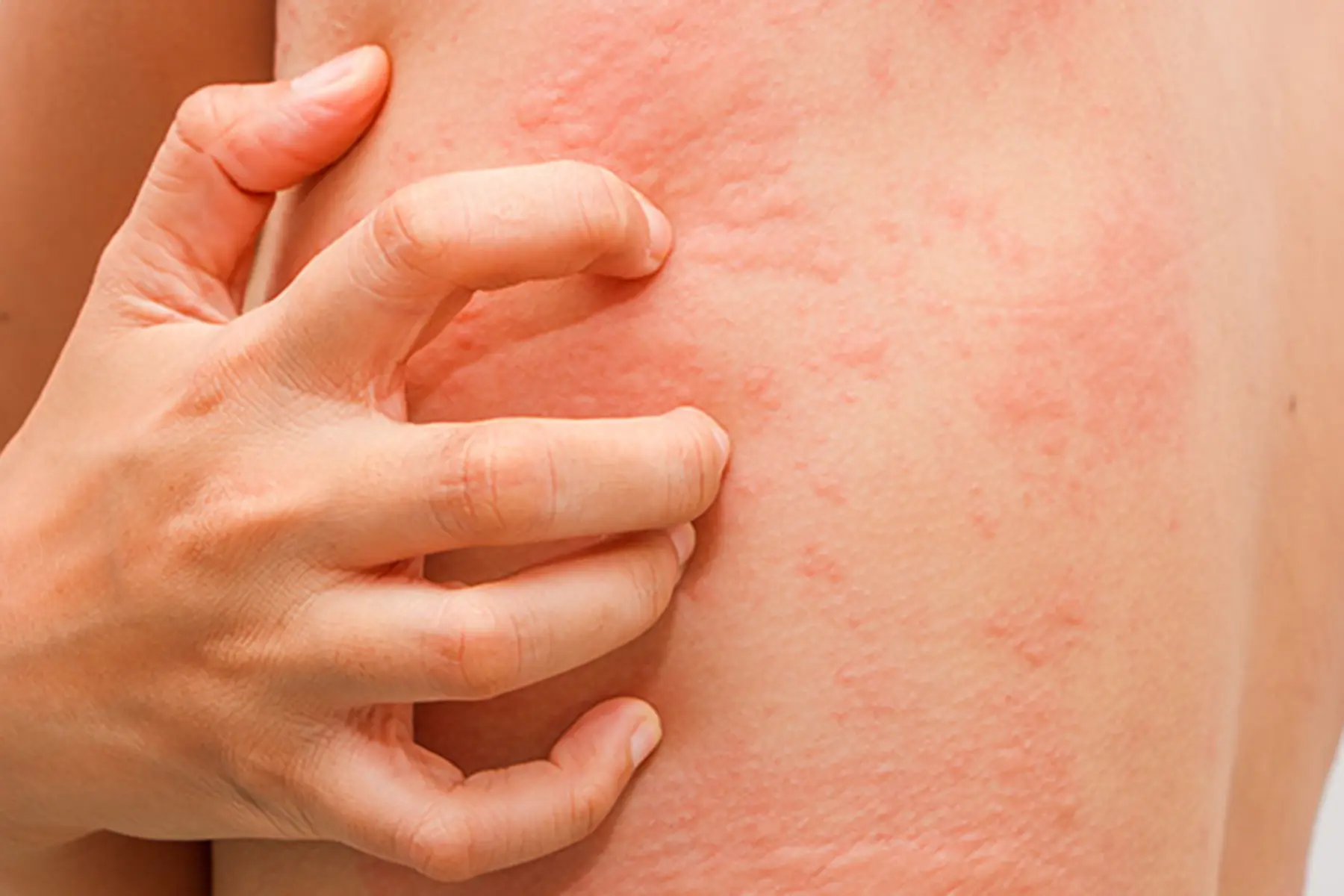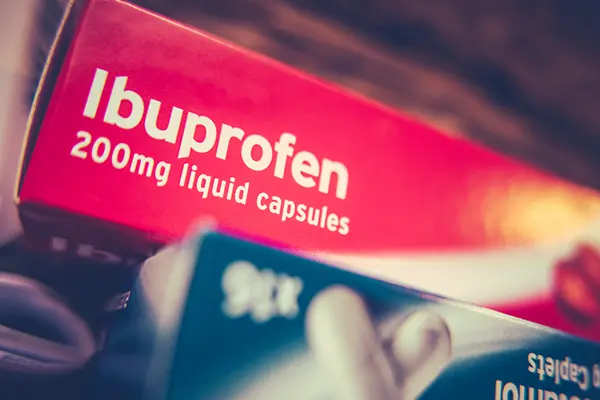What is an Amoxicillin Rash?

Amoxicillin is an antibiotic and is part of the penicillin family. It is used to treat a number of bacterial infections.
According to the Centers for Disease Control and Prevention (CDC), approximately 10% of all U.S. patients report having an allergic reaction to a penicillin class antibiotic at some point in their lives.
For children taking amoxicillin, around 5 to 10% will develop a skin rash during the course of the medication.
In this article, we will cover amoxicillin, an amoxicillin rash, its causes, symptoms, and how to treat it.
What is an Amoxicillin Allergy Rash?
Amoxicillin is a variation of penicillin, a common antibiotic drug to which many people are sensitive.
Both amoxicillin and penicillin are specifically used to treat bacterial infections and come in capsule, tablet, and liquid form.
Amoxicillin rashes are most commonly a side effect or reaction to antibiotics, particularly the antibiotic amoxicillin.
A rash arising from amoxicillin can vary from mild to severe, depending on the person’s sensitivity to the antibiotic.
Amoxicillin allergy rashes mostly affect babies and children, with girls more likely to develop them than boys.
Side Effects of Amoxicillin
While amoxicillin is one of the most common antibiotics for treating bacterial infections, there are some known potential side effects to look out for. These include:
- Dark urine, difficulty passing urine, or passing less urine than usual
- Diarrhea or an upset stomach
- Skin blistering, peeling, or becoming looser
- Feeling weak or fatigued
- Headache or dizziness
- Difficulty sleeping
- Seizures
- Unusual bleeding or bruising
- Yellowing of the eyes or skin
Types of Amoxicillin Rashes
There are two types of amoxicillin rashes: hives and a maculopapular rash. Doctors aren’t sure why some people develop amoxicillin rashes.
One of the rashes is commonly caused by an allergy (hives) while the other (maculopapular) is not.
Hives
Hives, also known as urticaria, are raised, itchy, white or red bumps or welts found on the skin. They are typically a reddish color and sometimes sting or hurt.
Most of the time, hives are caused by an allergic reaction to penicillin-based antibiotics, a food, or an irritant in the environment.
Hives are usually a temporary concern that can be dealt with using allergy medications, and sometimes these rashes will disappear on their own. However, there have been chronic cases where people have required medical intervention.
If you notice you or your child develop hives after taking medication containing amoxicillin, be sure to contact your doctor immediately.
You should also contact a doctor if you or your child are having trouble breathing or show signs of swelling on the skin.
Maculopapular Rash
The other type of rash that is a side effect of the penicillin family is the maculopapular rash.
Maculopapular rashes typically appear later than hives and are often seen between 3 and 10 days after taking amoxicillin medication.
Maculopapular rashes look like flat, red patches on the skin accompanied by smaller, pale patches.
Both hives and maculopapular rashes can spread across the body and can develop at any time during the course of penicillin-based antibiotics.
Key Point: Seeking Care if You’re Unsure
If you feel unsure about these penicillin side effects and potential allergic reactions, a doctor can provide help. Go to LifeMD.com to make an online appointment, and meet with a board-certified doctor or nurse practitioner from your smartphone, computer, or tablet.
Penicillin Allergy
A penicillin allergy is the immune system's abnormal reaction to the antibiotic drug penicillin.
Penicillin is most commonly prescribed for the treatment of bacterial infections. An antibiotic allergy can cause mild symptoms such as a rash or itching.
However, a penicillin allergy can also have severe reactions, such as anaphylaxis, a life-threatening condition.
What is anaphylaxis?
Anaphylaxis is a rare allergic reaction that causes various bodily systems to malfunction.
Signs and symptoms of anaphylaxis include:
- Tightening of the airways and throat, causing difficulty breathing
- Nausea or abdominal cramps
- Vomiting or diarrhea
- Dizziness or lightheadedness
- Weak, rapid pulse
- Drop in blood pressure
- Seizures
- Loss of consciousness
A penicillin allergy can occur just hours after taking the drug. However, penicillin is not the only antibiotic that can cause allergic reactions. Notify your doctor as soon as you identify some of the following symptoms:
- Skin rash
- Hives
- Itching
- Fever
- Swelling
- Shortness of breath
- Wheezing
- Runny nose
- Itchy, watery eyes
- Anaphylaxis (contact emergency services immediately)
Unsure which antibiotic is right for you?
Don't make guesses when it comes to your health. Schedule an online appointment so you can recover more quickly.


What Causes an Amoxicillin Rash?
Amoxicillin hives are considered to be the result of an allergic reaction to penicillin. However, doctors are unsure about what causes maculopapular rashes to develop.
If you or your child gets a skin rash that is not hives and has none of the symptoms mentioned earlier, it does not necessarily mean that you or they are allergic to penicillin or amoxicillin.
While it may seem obvious, one clear cause of amoxicillin rash is taking a medication that contains it. Amoxicillin is used to treat a range of bacterial infections and is commonly prescribed by doctors.
Amoxicillin is known to cause rashes in children and adolescents who have mononucleosis or mono.
What is mono?
Mono, short for mononucleosis, refers to a group of symptoms usually caused by the Epstein-Barr virus (EBV).
Anybody can contract mono, but it is most common in teenagers. The virus is also known as “the kissing disease” because it spreads through saliva.
Some symptoms of mono include:
- Headaches
- Fatigue
- Muscle weakness
- A rash consisting of flat pink or purple spots on the skin or in the mouth
- Swollen tonsils
- Night sweats
How Can I Treat an Amoxicillin Rash?
Because the amoxicillin rash may result from an allergy to the drug, the individual should stop taking the antibiotic immediately and see a doctor. The rash will typically begin disappearing when someone stops their amoxicillin treatment.
If a rash is the only symptom, the person may not need any additional treatment, and the symptoms should go away after the medication is stopped.
However, keep in mind that an allergic reaction to amoxicillin could develop into something serious quite quickly. If you are unsure about what to do, always contact a medical doctor for advice.
Key Point: What Symptoms Will an Amoxicillin Allergic Reaction Have?
If a person has allergic reactions to amoxicillin, they may also have the following immediate reactions:
- Hives
- Itchy skin
- Difficulty breathing
- Swollen lips
- Swollen face
If the amoxicillin allergy rash is just itchy, then over-the-counter medications can help with the symptoms.
A doctor might also recommend a steroid cream to help relieve any itchiness that persists after the rash has disappeared.
If the individual is experiencing swelling or breathing difficulties, they should contact emergency services immediately.
When Should You Seek Help?
In most cases, if you are experiencing an amoxicillin allergy rash, the reaction will disappear on its own once you’ve stopped taking the antibiotic.
If there’s residual itchiness, your doctor may recommend a steroid cream to apply to the skin.
Although an amoxicillin rash alone is not dangerous, the allergy could be hazardous to your child if the rash is an allergic reaction.
You should never hesitate to seek medical help if you need it.
Where Can I Get Additional Medical Advice?
While most cases of amoxicillin rash can be treated at home, there are some cases when medication can help ease the symptoms.
If you are currently experiencing one or more of the symptoms mentioned in this article, don’t hesitate to seek medical advice. If you're potentially experiencing an anaphylactic reaction, seek emergency help immediately. If your rash is not a medical emergency, you can talk to a board-certified doctor or nurse practioner over your smartphone or computer. Head over to LifeMD to make an appointment.
More articles like this
Feel better with LifeMD.
Your doctor is online and ready to see you.
Join LifeMD today and experience amazing healthcare, discounted labs and prescription medications... plus around-the-clock access to medical guidance.









